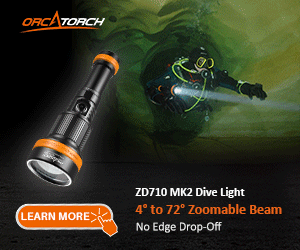No answer on my post to the strobe section so will try here. I need to know if the Oly UFL-1 will work with an Oly 5050 camera and housing. The write-ups say "most housing". Can anyone confirm?
You are using an out of date browser. It may not display this or other websites correctly.
You should upgrade or use an alternative browser.
You should upgrade or use an alternative browser.
Oly UFL-1
- Thread starter MMM
- Start date
Please register or login
Welcome to ScubaBoard, the world's largest scuba diving community. Registration is not required to read the forums, but we encourage you to join. Joining has its benefits and enables you to participate in the discussions.
Benefits of registering include
- Ability to post and comment on topics and discussions.
- A Free photo gallery to share your dive photos with the world.
- You can make this box go away
Googled this:
Date Added: 31st August 2007
Question: What do I need to use this flash with my olympus 5050 zoom with underwater case
Bristol Cameras Answer: As well as the strobe you would need a tray and arm, a good set up would be the 10Bar single stay slot tray and the 36cm 10Bar flexible arm. If you want to trigger the strobe via a fibre optic cable (rather than relying on the slave sensor) you would have to also purchase the Sea & Sea fibre optic cable (50107) and the Strobe Mask set. Hope this is of help to you.
This was from an English outfit, Bristol Camera. The UFL-1 is a slave strobe. It mimics the Olympus built in flash. They say it can be used without a fiber optic cord, but from my experience-not a good idea. In bright light, you often don't get response from a slave flash, or it fires due to sunlight. Also, without masking the built in flash, you'll tend to get backscatter, i.e. light reflected back into the lens by particles in the water because the flash is too close to the lens. With a fiberoptic cable, you can mask off the flash and just use it as a signal to the strobe, which is held much farther from the lens and aimed slightly away from the subject, so just the edge of the light covers the subject and less light is reflected back.
Date Added: 31st August 2007
Question: What do I need to use this flash with my olympus 5050 zoom with underwater case
Bristol Cameras Answer: As well as the strobe you would need a tray and arm, a good set up would be the 10Bar single stay slot tray and the 36cm 10Bar flexible arm. If you want to trigger the strobe via a fibre optic cable (rather than relying on the slave sensor) you would have to also purchase the Sea & Sea fibre optic cable (50107) and the Strobe Mask set. Hope this is of help to you.
This was from an English outfit, Bristol Camera. The UFL-1 is a slave strobe. It mimics the Olympus built in flash. They say it can be used without a fiber optic cord, but from my experience-not a good idea. In bright light, you often don't get response from a slave flash, or it fires due to sunlight. Also, without masking the built in flash, you'll tend to get backscatter, i.e. light reflected back into the lens by particles in the water because the flash is too close to the lens. With a fiberoptic cable, you can mask off the flash and just use it as a signal to the strobe, which is held much farther from the lens and aimed slightly away from the subject, so just the edge of the light covers the subject and less light is reflected back.
Similar threads
- Replies
- 11
- Views
- 1,533
- Replies
- 25
- Views
- 2,607



